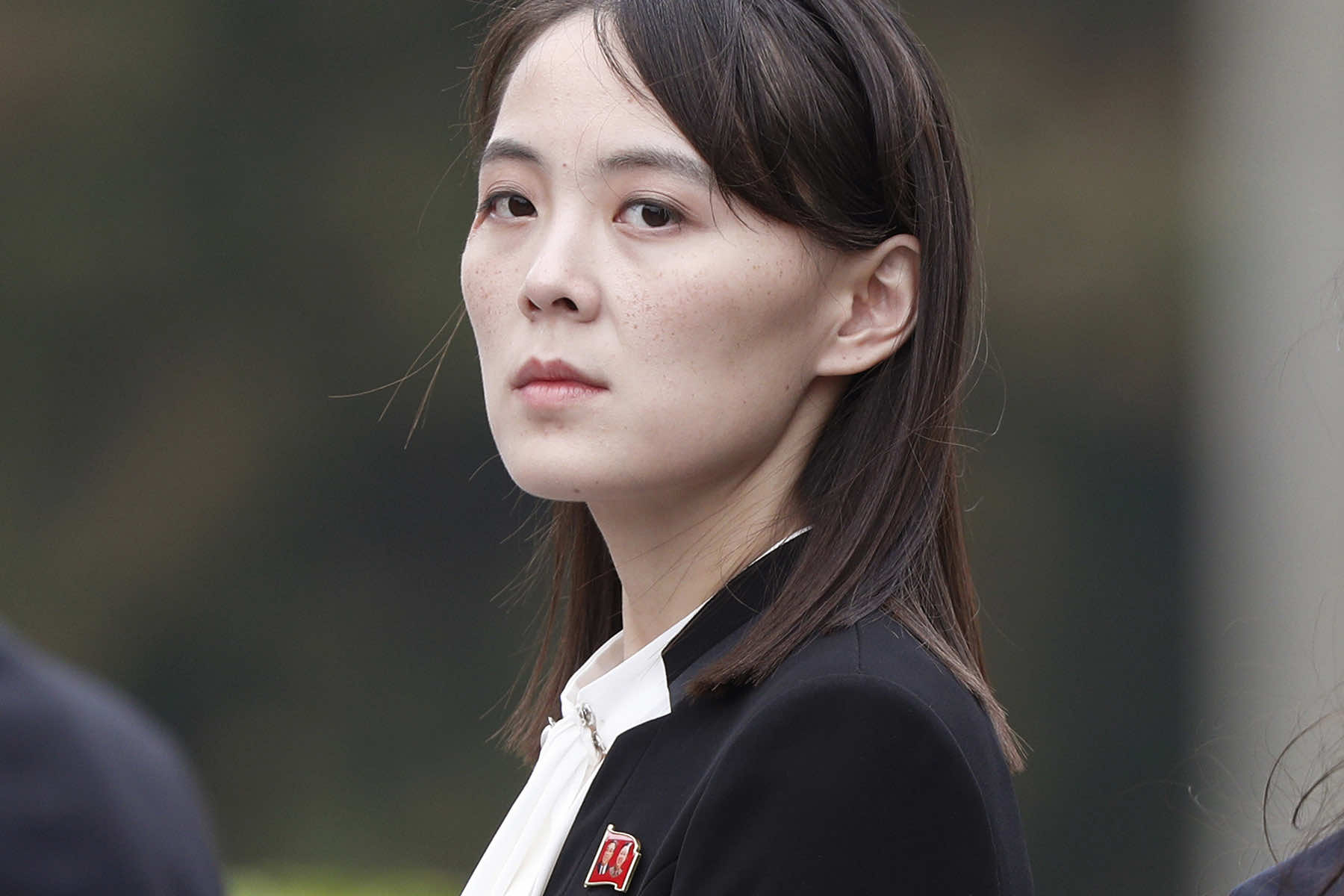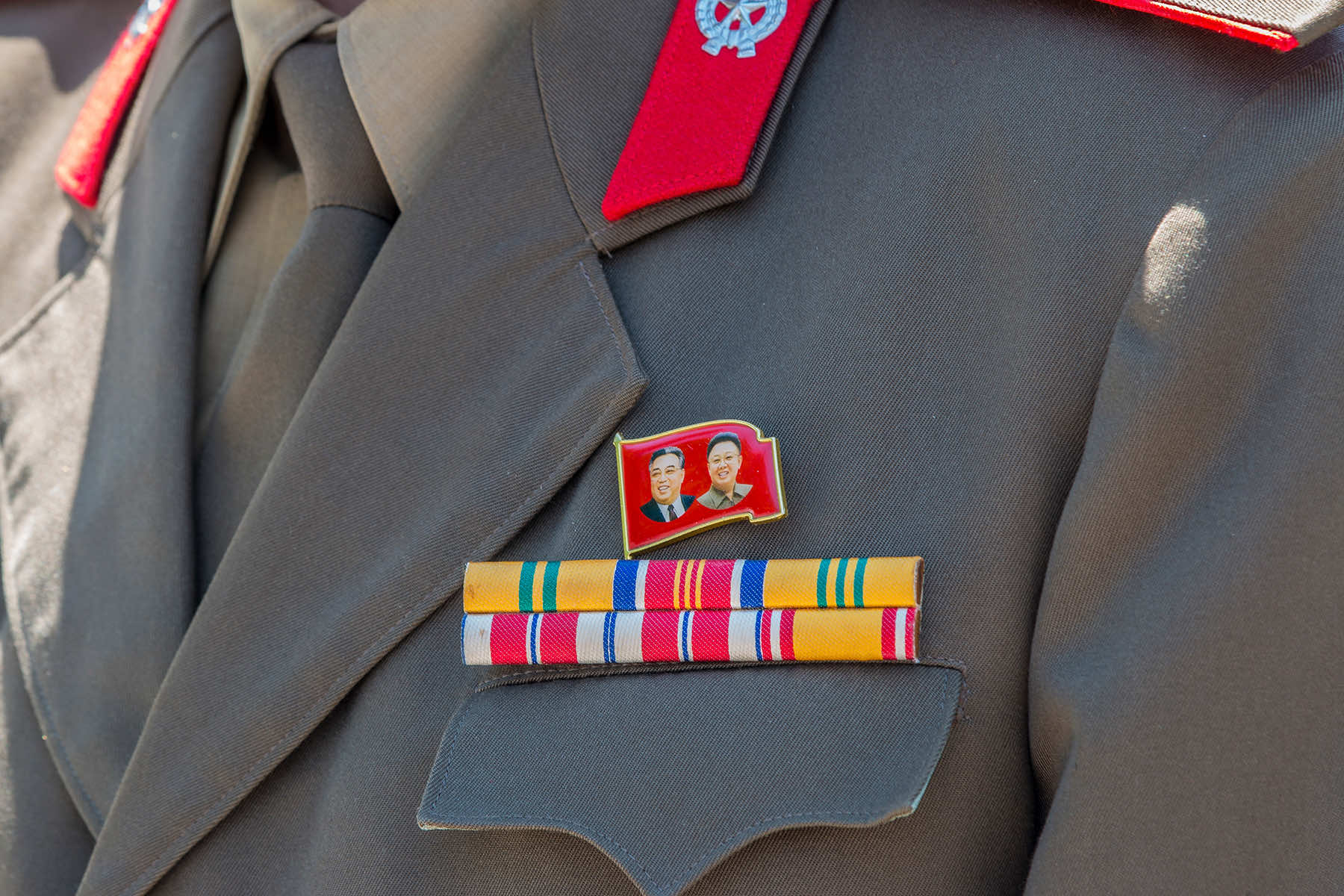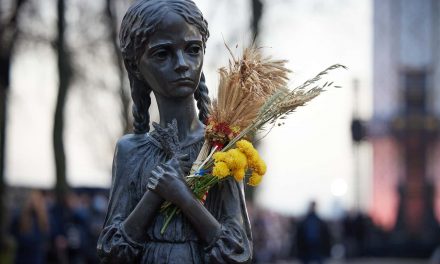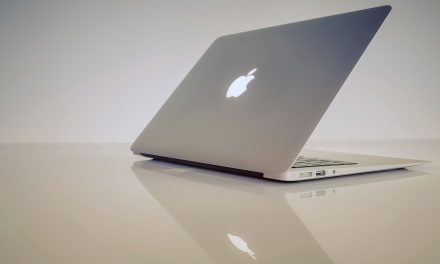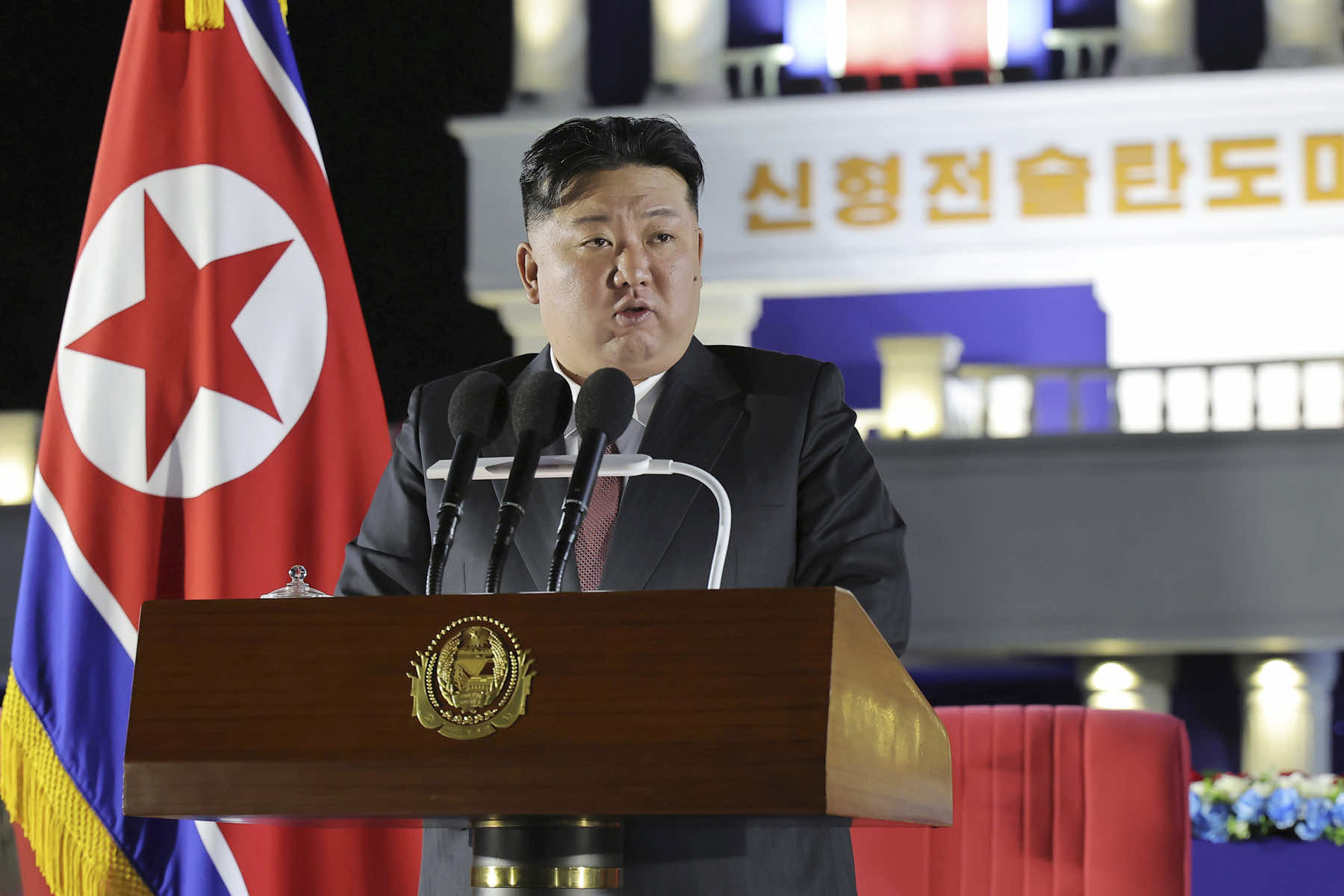
North Korean officials have been seen in recent months wearing lapel pins with the image of leader Kim Jong Un, another sign the North was boosting his personality cult to the level bestowed on his late dictator father and grandfather.
Citizens of North Korea are required to wear pins over their hearts, which for decades bore images of either the country’s founder, Kim Il Sung, or his son Kim Jong Il, or both. The existence of pins dedicated to Kim Jong Un had not been verified until state media published photos in July showing officials wearing his pins at a ruling Workers’ Party meeting.
The pins are part of a state-sponsored mythology surrounding the Kim family which treats Kim Il Sung and Kim Jong Il like gods. They are memorialized with numerous statues across North Korea, their birthdays are two of the country’s main holidays and their portraits are hung in all homes and offices.
The personality cult began to take shape during Kim Il Sung’s early years in power. It was initially built on his role as a guerrilla fighter against Japanese colonial rule in Korea and was later expanded to include his leadership in the Korean War and the establishment of North Korea as a socialist state.
The North Korean government employed extensive propaganda to deify Kim Il Sung, along with the educational system that constantly reinforced his image as the “Great Leader” and “Eternal President.” Over the decades, the regime engaged in historical revisionism to exaggerate Kim Il Sung’s achievements and contributions.
Few question current leader Kim Jong Un’s hold on power, but few images honoring the 40-year-old have been displayed in public since he took power in late 2011 upon his father’s death. Recently, however, he has begun taking steps to boost his own personality cult while also trying to further move out of the shadow of his father’s and grandfather’s legacies.
In May, his portrait was publicly displayed along with those of the two other Kims for the first time at a Workers’ Party-run training school. In January, Kim announced he would no longer pursue peaceful unification with South Korea, a decadeslong policy cherished by his father and grandfather. Observers also say North Korea appears to be refraining from using terms like “the Day of Sun,” a reference to the April 15 birthday of Kim Il Sung.
“The latest series of efforts to idolize Kim Jong Un is assessed as a move to dilute his predecessors while establishing his authority as a leader” different from them, said Kim Inae, a deputy spokesperson for South Korea’s Unification Ministry.
She observed that Kim was also likely trying to boost internal solidarity behind his leadership as he grappled with economic hardships and the influence of South Korean pop culture.
The state ideology of Juche was central to the personality cult. It emphasized self-reliance, independence, and the unique role of the leader in guiding the nation. The Juche ideology reinforced the idea that the leader was the ultimate source of wisdom and guidance for the people.
The cult of Kim Il Sung permeated all aspects of North Korean life. It dictated the content of education, art, literature, and even personal behavior, and extended to his descendants, particularly his son Kim Jong Il and grandson Kim Jong Un. It helped maintain the Kim family’s grip on power by portraying them as the legitimate and natural successors to Kim Il Sung’s legacy.
Ahn Kyung-su, head of dprkhealth.org, a website focusing on health issues in North Korea, said Kim Jong Un was trying to phase out the symbols representing the legacies of his predecessors to promote his own era. But as the third-generation leader in the Kim family, he would find it difficult to push too far because that would also weaken the legitimacy of its dynastic rule, said Ahn, who has interviewed many North Korean defectors and closely monitors North Korean state media.
“Kim Jong Un is in a dilemma. He wants to stay away from his father’s and grandfather’s legacies more but he can’t do so,” Ahn said.
He confirmed that North Koreans are expected to wear Kim Jong Un pins.
Leif-Eric Easley, professor of international studies at Ewha Womans University in Seoul, said the wearing of Kim Jong Un pins was not surprising, given that he has been consolidating his rule for over a decade.
“The question is, now that Kim has stepped out from the shadow of his predecessors, whether he will undertake policy adjustments to break with North Korea’s past economic failures,” Easley said.
In recent years, North Korea’s fragile economy has suffered further setbacks because of strict pandemic restrictions, persistent U.N. sanctions, and its own mismanagement. During a Workers’ Party meeting in June, Kim spoke about “some deviations obstructing” efforts to improve the country’s economic status, according to state media.
South Korea’s spy agency said in August that Kim appeared to have obesity-related health problems such as high blood pressure and diabetes, and his officials were looking for new medicines abroad to treat them. Known for heavy drinking and smoking, both his father and grandfather died of heart issues.
Some experts believe that Kim’s moves were also related to his reported push to make his preteen daughter – Kim Ju Ae, his heir in another hereditary power transfer. But she has not been officially designated as her father’s successor.
Speculation about the 11-year-old flared after she accompanied her father on high-profile public events starting in late 2022. At least 60% of Kim Ju Ae’s public activities have involved attending military events with her father.
State media called her Kim Jong Un’s “most beloved” or “respected” child and churned out footage and photos proving her rising political standing and closeness with her father.
Some analysts say it is still too early to call her Kim’s successor, citing the possibility that she could be replaced by one of her siblings due to her age and North Korea’s male-dominated hierarchy.
MI Staff (Korea), with Hyung-Jin Kim
Torsten Pursche, Astrelok, Lebedev, Oleg Znamenskiy (via Shutterstock), and Jorge Silva (AP), Korea News Service (via AP)
- Exploring Korea: Stories from Milwaukee to the DMZ and across a divided peninsula
- A pawn of history: How the Great Power struggle to control Korea set the stage for its civil war
- Names for Korea: The evolution of English words used for its identity from Gojoseon to Daehan Minguk
- SeonJoo So Oh: Living her dream of creating a "folded paper" bridge between Milwaukee and Korean culture
- A Cultural Bridge: Why Milwaukee needs to invest in a Museum that celebrates Korean art and history
- Korean diplomat joins Milwaukee's Korean American community in celebration of 79th Liberation Day
- John T. Chisholm: Standing guard along the volatile Korean DMZ at the end of the Cold War
- Most Dangerous Game: The golf course where U.S. soldiers play surrounded by North Korean snipers
- Triumph and Tragedy: How the 1988 Seoul Olympics became a battleground for Cold War politics
- Dan Odya: The challenges of serving at the Korean Demilitarized Zone during the Vietnam War
- The Korean Demilitarized Zone: A border between peace and war that also cuts across hearts and history
- The Korean DMZ Conflict: A forgotten "Second Chapter" of America's "Forgotten War"
- Dick Cavalco: A life shaped by service but also silence for 65 years about the Korean War
- Overshadowed by conflict: Why the Korean War still struggles for recognition and remembrance
- Wisconsin's Korean War Memorial stands as a timeless tribute to a generation of "forgotten" veterans
- Glenn Dohrmann: The extraordinary journey from an orphaned farm boy to a highly decorated hero
- The fight for Hill 266: Glenn Dohrmann recalls one of the Korean War's most fierce battles
- Frozen in time: Rare photos from a side of the Korean War that most families in Milwaukee never saw
- Jessica Boling: The emotional journey from an American adoption to reclaiming her Korean identity
- A deportation story: When South Korea was forced to confront its adoption industry's history of abuse
- South Korea faces severe population decline amid growing burdens on marriage and parenthood
- Emma Daisy Gertel: Why finding comfort with the "in-between space" as a Korean adoptee is a superpower
- The Soul of Seoul: A photographic look at the dynamic streets and urban layers of a megacity
- The Creation of Hangul: A linguistic masterpiece designed by King Sejong to increase Korean literacy
- Rick Wood: Veteran Milwaukee photojournalist reflects on his rare trip to reclusive North Korea
- Dynastic Rule: Personality cult of Kim Jong Un expands as North Koreans wear his pins to show total loyalty
- South Korea formalizes nuclear deterrent strategy with U.S. as North Korea aims to boost atomic arsenal
- Tea with Jin: A rare conversation with a North Korean defector living a happier life in Seoul
- Journalism and Statecraft: Why it is complicated for foreign press to interview a North Korean defector
- Inside North Korea’s Isolation: A decade of images show rare views of life around Pyongyang
- Karyn Althoff Roelke: How Honor Flights remind Korean War veterans that they are not forgotten
- Letters from North Korea: How Milwaukee County Historical Society preserves stories from war veterans
- A Cold War Secret: Graves discovered of Russian pilots who flew MiG jets for North Korea during Korean War
- Heechang Kang: How a Korean American pastor balances tradition and integration at church
- Faith and Heritage: A Pew Research Center's perspective on Korean American Christians in Milwaukee
- Landmark legal verdict by South Korea's top court opens the door to some rights for same-sex couples
- Kenny Yoo: How the adversities of dyslexia and the war in Afghanistan fueled his success as a photojournalist
- Walking between two worlds: The complex dynamics of code-switching among Korean Americans
- A look back at Kamala Harris in South Korea as U.S. looks ahead to more provocations by North Korea
- Jason S. Yi: Feeling at peace with the duality of being both an American and a Korean in Milwaukee
- The Zainichi experience: Second season of “Pachinko” examines the hardships of ethnic Koreans in Japan
- Shadows of History: South Korea's lingering struggle for justice over "Comfort Women"
- Christopher Michael Doll: An unexpected life in South Korea and its cross-cultural intersections
- Korea in 1895: How UW-Milwaukee's AGSL protects the historic treasures of Kim Jeong-ho and George C. Foulk
- "Ink. Brush. Paper." Exhibit: Korean Sumukhwa art highlights women’s empowerment in Milwaukee
- Christopher Wing: The cultural bonds between Milwaukee and Changwon built by brewing beer
- Halloween Crowd Crush: A solemn remembrance of the Itaewon tragedy after two years of mourning
- Forgotten Victims: How panic and paranoia led to a massacre of refugees at the No Gun Ri Bridge
- Kyoung Ae Cho: How embracing Korean heritage and uniting cultures started with her own name
- Complexities of Identity: When being from North Korea does not mean being North Korean
- A fragile peace: Tensions simmer at DMZ as North Korean soldiers cross into the South multiple times
- Byung-Il Choi: A lifelong dedication to medicine began with the kindness of U.S. soldiers to a child of war
- Restoring Harmony: South Korea's long search to reclaim its identity from Japanese occupation
- Sado gold mine gains UNESCO status after Tokyo pledges to exhibit WWII trauma of Korean laborers
- The Heartbeat of K-Pop: How Tina Melk's passion for Korean music inspired a utopia for others to share
- K-pop Revolution: The Korean cultural phenomenon that captivated a growing audience in Milwaukee
- Artifacts from BTS and LE SSERAFIM featured at Grammy Museum exhibit put K-pop fashion in the spotlight
- Hyunjoo Han: The unconventional path from a Korean village to Milwaukee’s multicultural landscape
- The Battle of Restraint: How nuclear weapons almost redefined warfare on the Korean peninsula
- Rejection of peace: Why North Korea's increasing hostility to the South was inevitable
- WonWoo Chung: Navigating life, faith, and identity between cultures in Milwaukee and Seoul
- Korean Landmarks: A visual tour of heritage sites from the Silla and Joseon Dynasties
- South Korea’s Digital Nomad Visa offers a global gateway for Milwaukee’s young professionals
- Forgotten Gando: Why the autonomous Korean territory within China remains a footnote in history
- A game of maps: How China prepared to steal Korean history to prevent reunification
- From Taiwan to Korea: When Mao Zedong shifted China’s priority amid Soviet and American pressures
- Hoyoon Min: Putting his future on hold in Milwaukee to serve in his homeland's military
- A long journey home: Robert P. Raess laid to rest in Wisconsin after being MIA in Korean War for 70 years
- Existential threats: A cost of living in Seoul comes with being in range of North Korea's artillery
- Jinseon Kim: A Seoulite's creative adventure recording the city’s legacy and allure through art
- A subway journey: Exploring Euljiro in illustrations and by foot on Line 2 with artist Jinseon Kim
- Seoul Searching: Revisiting the first film to explore the experiences of Korean adoptees and diaspora





